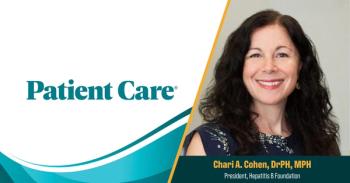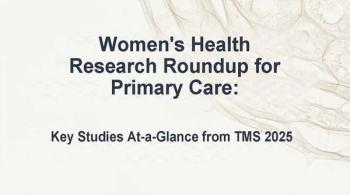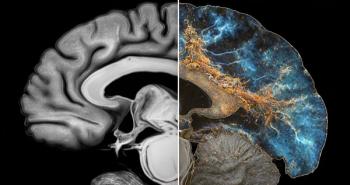
Black Women Prescribed Menopausal Hormone Therapy at Significantly Lower Rates Despite More Severe Symptoms, Study Finds
TMS: Black women are up to 36% less likely to receive a prescription for systemic estrogen than White women, despite more acute and persistent VMS, authors said.
Black women seeking care for
The study findings are being presented this week during
For women experiencing menopause-related symptoms who do not have contraindications to the treatment, menopausal hormone therapy (MHT) is recommended as first-line, Anna C Cochrane, MD, MSCR and colleagues wrote. Following the Women's Health Initiative (WHI), however, MHT prescriptions dropped precipitously, falling from 26.9% to 4.7% between 1999 and 2020. Available evidence suggests that Black and Hispanic women use MHT at rates 2–10 times lower than White women, despite experiencing vasomotor symptoms (VMS) longer and at more severe rates than White women.
Cochrane and colleagues designed this study to assess whether patient-level demographic factors, including race and ethnicity, are associated with receipt of prescription medication for menopause symptoms.
Study Design
For the retrospective cohort study, the team tapped clinical data from the electronic health record (EHR) of a large academic healthcare system from January 1, 2016, through December 31, 2023. They identified women aged 40–55 years seeking care for menopause symptoms using ICD-10 codes from any outpatient encounter with family medicine, internal medicine, endocrinology, or OB/Gyn clinicians. They extracted prescriptions for systemic estrogen, vaginal estrogen, and selective serotonin reuptake inhibitors (SSRIs) associated in the EHR with menopause ICD-10 diagnoses.
The team used bivariate and multivariable logistic regression to evaluate associations between patient demographic characteristics and receipt of prescription treatment. The minimally sufficient variables for the association of prescription treatment with insurance status were race and age. Cochrane et al identified no minimally sufficient variables for the association of prescription treatment and race or ethnicity, so performed bivariate analysis.
Findings
The analysis included 5,491 women with an eligible outpatient encounter. Women who self reported as White comprised 66.6% of the population, Black women 22.3%, and 7.2% identified as Hispanic ethnicity. Managed care insurance covered 75.6% of participants, 6.5% carried Medicaid 7.7%Medicare. English was the primary language for 94.3% of the cohort, with 4.3% listing Spanish as their primary language.
Racial Disparities Stand Out. Relative to White women, Black women were 21% less likely to receive any prescription treatment for menopause symptoms (OR 0.79, 95% CI: 0.67-0.95). The disparity proved most pronounced for systemic estrogen, where Black women faced 36% lower odds of receiving prescriptions (OR 0.64, 95% CI: 0.47-0.87). However, Black women were more one and a half times more likely to receive selective serotonin reuptake inhibitor antidepressants than White women (OR 1.49, 95% CI: 1.04-2.14).
Researchers found no significant differences in receipt of any prescription treatments for Hispanic women when compared with White women. However, Spanish as a primary language was significantly associated with increased receipt of vaginal estrogen (OR 1.62, 95% CI: 1.09-2.42).
Insurance Status Compounds Treatment Barriers. Women with Medicaid were less likely to receive any treatment for VMS (OR 0.67, 95% CI: 0.48-0.94) compared with study participants who had managed care insurance, according to the study abstract. Women carrying both Medicaid and Medicare faced substantially reduced odds of receiving systemic estrogen, essentially half the rate for each compared with participants on managed care: Medicaid, OR 0.50, 95% CI: 0.26-0.95; Medicare, OR 0.46, 95% CI: 0.25-0.82).
The disparities in prescription treatment for VMS may highlight both implicit and explicit biases in prescribing patterns, Cochrane and colleagues wrote in their abstract. They acknowledge that multiple factors likely contribute to the differences but that the current findings "may offer opportunity for specific and actionable targets for educational intervention. Our results underline the need for equitable care for women experiencing menopause symptoms and lay the groundwork for future interventions," they concluded.
Source: Cochrane AC, McAllister VM, Jensen ET, O'Connell NS. Patient-level factors associated with receipt of prescription medication for menopause symptoms. Abstract presented at: The Menopause Society’s 2025 Annual Meeting; October 21-25, 2025; Orlando, FL. Accessed October 22, 2025.
Newsletter
Enhance your clinical practice with the Patient Care newsletter, offering the latest evidence-based guidelines, diagnostic insights, and treatment strategies for primary care physicians.













































































































































































































































































